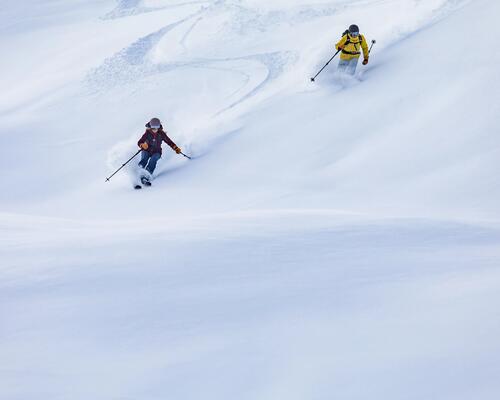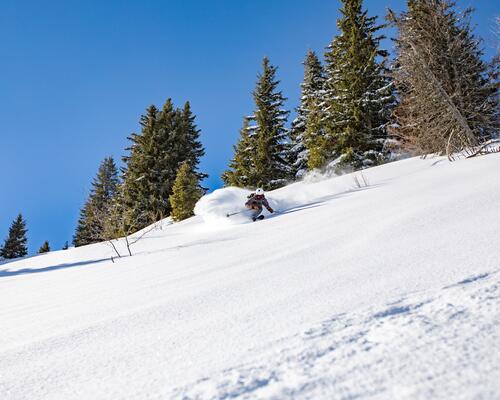You've witnessed an avalanche... what do you do?
1/PUT YOUR SAFETY FIRST
You've witnessed an avalanche or you find an avalanche covering an area you passed some time earlier? If your first instinct is to rescue the victims, always remember that you need to put your safety first.
Analyse the situation, look around you: could there be another avalanche? are you in a dangerous location, with crevasses or patches of ice?
Whatever the situation, put your safety first: put on a harness and belay yourself somewhere, put on your crampons, make an anchor point with a ski to belay yourself, etc.
2/SEARCH FOR SIGNS ON THE SURFACE
Once you are safe, check for signs of the presence of any victims caught in the avalanche: a ski on the snow, a pole that is protruding above the snow, a visible piece of clothing or backpack, etc. If you immediately spot something, start organising the rescue based on these clues. In any case, quickly notify the emergency services that an avalanche has occurred in a busy area.
3/APPOINT A LEADER
To be effective in a rescue, there should be just one person from the group who takes charge and assigns each person with their role:
- one person calls for help
- another starts searching with the transceiver
The leader reminds everyone of the search steps, organises the group and any rotations that may be required, checks that everyone is safe and passes on information as needed. Remember to prepare your gear for the search. Here is the list of things to do:
1 turn off the transceivers
2 turn off and put your phone away
3 switch the transceivers of those conducting the search to "search" mode
4 get the shovel and probe out





